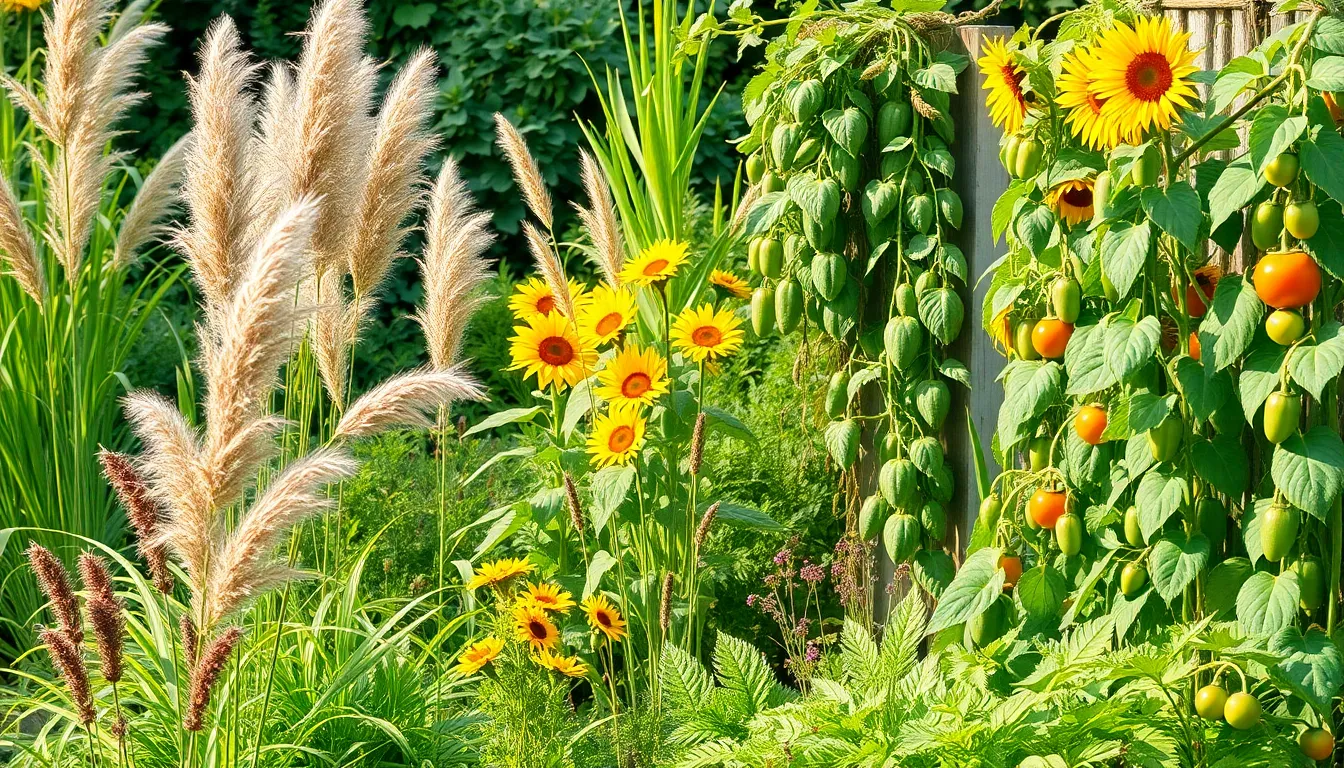The Best Fluffy Pancakes recipe you will fall in love with. Full of tips and tricks to help you make the best pancakes.

Tall Plants Outdoor: Transform Your Garden into a Lush Retreat with These Stunning Options
When it comes to outdoor gardening, tall plants are like the overachieving friends who always steal the spotlight. They tower above the rest, adding height and drama to any landscape. Whether it’s for privacy, shade, or just to impress the neighbors, these green giants can transform a mundane yard into a stunning sanctuary.
Imagine stepping into your garden and being greeted by the majestic sway of sunflowers or the elegant posture of towering hollyhocks. Not only do they create a striking visual impact, but they also provide essential habitats for wildlife. So if you’ve been on the fence about adding some height to your outdoor space, it’s time to embrace the tall plant revolution. After all, who wouldn’t want a garden that’s the envy of the block?
Tall Plants Outdoor
Tall plants significantly enhance outdoor spaces, providing numerous advantages that go beyond mere visual appeal. They contribute to landscape design while supporting the ecosystem in various ways.
Aesthetic Appeal
Height creates focal points within gardens. Sunflowers, for example, draw the eye upward with their vibrant blooms. Vertical elements add structure to garden designs. Unique shapes from tall plants create visual interest, breaking the monotony of low-growing flora. Layering plants of varying heights enhances the overall depth and dimension of landscapes. Striking silhouettes emerge in the evening light, enhancing the beauty of gardens during twilight hours. Colorful blooms from tall plants stand out against lower foliage, making gardens visually striking and inviting.
Privacy and Windbreak
Tall plants provide natural privacy barriers. Dense growth creates effective screens, allowing homeowners to enjoy outdoor spaces without feeling exposed. Certain species, like bamboo, grow quickly and offer significant seclusion. Windbreaks can be established with strategically planted tall plants, helping shield outdoor areas from harsh winds, which enhances comfort. Effective wind barriers reduce soil erosion and protect smaller plants from damage. With proper placement, tall plants can buffer noise, increasing tranquility in outdoor environments. They help create peaceful retreats in busy urban settings, serving as a sanctuary for relaxation.
Popular Tall Plants for Outdoor Spaces


Incorporating tall plants elevates outdoor spaces, offering visual interest and functional benefits. Various categories include ornamental grasses, flowering plants, and vegetable options.
Ornamental Grasses
Ornamental grasses add elegance and movement to gardens. Varieties like Miscanthus sinensis and Pennisetum alopecuroides thrive in various climates. Tall grasses create a soft backdrop, enhancing surrounding flowers. They sway gently in the wind, contributing to a dynamic landscape. Maintenance requirements are low, making them easy choices for many gardeners. Planting them in clusters yields a stunning visual impact, especially during golden hour.
Flowering Plants
Flowering plants bring vivid colors and enchanting scents to outdoor spaces. Sunflowers and hollyhocks stand tall, attracting pollinators like bees and butterflies. These plants bloom in various seasons, ensuring year-round interest in the garden. Consider planting varieties that offer height while showcasing different colors and shapes. They not only serve as focal points but can also provide privacy when placed strategically. Regular deadheading encourages further blooms, extending their visual appeal.
Vegetable Options
Growing tall vegetable options maximizes gardening space and yields. Tomatoes, for instance, can grow several feet tall with proper support. Trellising methods allow them to climb, saving ground space for other crops. Cucumbers and pole beans also gain height and make ideal companions in a vegetable garden. Heightening vegetable plants draws attention to vertical gardening techniques. Integration with tall flowering plants creates an aesthetically pleasing arrangement in edible landscapes.
Care and Maintenance of Tall Plants
Caring for tall plants requires attention to watering, soil, and regular maintenance tasks. Understanding their specific needs promotes healthy growth and vibrant displays.
Watering and Soil Requirements
Watering tall plants consistently is crucial. They generally prefer well-draining soil, which prevents root rot. For many tall varieties, regular moisture during dry spells supports their growth. Soil with a mix of organic matter enhances nutrient availability. Testing soil drainage can help determine if amendments are necessary. Observing the plant’s leaves can signal water needs; drooping or yellowing often indicates insufficient moisture. Ensuring adequate hydration aids in sustaining their stature and vibrancy.
Pruning and Fertilization
Pruning tall plants encourages robust growth and shape maintenance. Regular trimming removes dead or diseased branches, promoting air circulation. Different species dictate specific timing for pruning; spring flowering types benefit from late winter cuts. Fertilization significantly boosts growth during the growing season. Providing slow-release fertilizers enhances nutrient uptake and limits over-fertilization risks. For best results, analyzing soil nutrients before fertilizing ensures the right balance. Monitoring plant health after pruning and fertilizing identifies effective practices.
Planting Tips for Tall Plants Outdoor
Planting tall plants requires careful planning to ensure they thrive in outdoor spaces. Consider factors like sunlight, soil drainage, and surrounding plants for optimal results.
Choosing the Right Location
Selecting the correct location plays a crucial role in the success of tall plants. Tall plants typically need full sun, so they thrive best in areas receiving at least six hours of sunlight daily. Soil quality matters as well; it must be well-draining to prevent root rot. Avoid shaded areas, which can hinder growth. Additionally, protect taller plants from strong winds by placing them near structures or shorter plants. This positioning creates a natural windbreak.
Companion Planting
Companion planting enhances the overall garden environment while boosting the growth of tall plants. Pairing tall plants with shorter varieties helps create layers, improving visual appeal. For example, sunflowers establish a dramatic backdrop for colorful annuals like marigolds or zinnias. Include plants that attract beneficial insects to draw pollinators, aiding all plants’ growth. Alternatively, consider planting herbs near vegetables for natural pest deterrence. Using companion planting promotes healthier ecosystems, ensuring vibrant gardens.
Conclusion
Incorporating tall plants into outdoor spaces transforms gardens into vibrant ecosystems. These plants not only add visual interest and height but also serve essential ecological functions. By creating habitats for wildlife and enhancing privacy, they contribute to a serene outdoor environment.
With careful planning and proper maintenance, homeowners can enjoy the numerous benefits tall plants offer. From ornamental grasses to flowering varieties and even towering vegetables, the options are plentiful. Embracing these green giants can elevate any garden, making it a stunning retreat that harmonizes beauty and nature.
